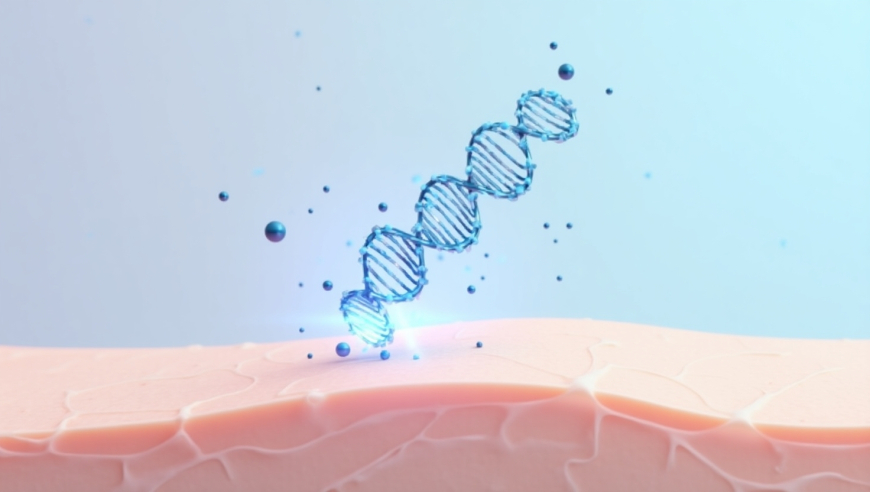Peptides in Dermatology: Unlocking New Frontiers in Skin Regeneration and Repair

Introduction to Bioactive Peptides in Skin Science
Peptides, short chains of amino acids, play a crucial role in regulating physiological functions across various tissues, with particular importance in dermatology. These bioactive compounds act as signaling molecules, modulating cellular activities such as collagen synthesis, melanogenesis, inflammation control, and wound healing. Their ability to stimulate dermal fibroblasts, encourage extracellular matrix (ECM) remodeling, and support angiogenesis has positioned them at the center of skin regeneration research. Clinical and preclinical studies continue to highlight peptides’ efficacy in reversing photoaging, enhancing elasticity, and accelerating tissue repair making them indispensable tools in aesthetic and therapeutic dermatology.
As demand increases in clinical and laboratory environments, researchers often source peptides for sale from certified suppliers to ensure purity and sequence fidelity for experimental applications involving cutaneous healing and cellular renewal.
Mechanisms of Peptide Action in Skin Regeneration
Peptides exert regenerative effects by mimicking naturally occurring protein fragments that bind to receptors on the skin's surface. Upon interaction, these peptides trigger intracellular pathways that lead to gene expression changes, protein synthesis, and targeted cellular responses. Key categories include signal peptides, carrier peptides, enzyme-inhibitor peptides, and neurotransmitter-inhibiting peptides all of which contribute differently to dermatologic outcomes.
Signal peptides like palmitoyl pentapeptide-4 and copper tripeptides enhance fibroblast activity, encouraging the production of Type I and III collagen, elastin, and glycosaminoglycans. These changes result in improved skin texture, hydration, and firmness. In anti-aging applications, their influence on matrix metalloproteinases (MMPs) and tissue inhibitors of metalloproteinases (TIMPs) further preserves dermal integrity.
Clinicians and researchers seeking to get high-quality peptides online for investigative use focus heavily on these signaling peptides due to their consistent performance in stimulating ECM recovery and cellular turnover.
Wound Healing and Inflammation Modulation
Peptides like thymosin β4, LL-37, and bioengineered growth factor analogs have shown substantial promise in promoting wound closure and minimizing inflammatory responses. These peptides increase keratinocyte migration, promote angiogenesis, and limit microbial colonization, which are all essential in accelerating wound healing, particularly in chronic or compromised environments.
In dermatologic models, topical application of wound-healing peptides has led to measurable reductions in inflammatory cytokines (such as IL-6 and TNF-α) and enhanced expression of vascular endothelial growth factor (VEGF), supporting revascularization of the affected tissue. Understanding the correct administration and dosage is vital for therapeutic outcomes, and many research labs rely on a peptide dosage calculator to ensure optimal concentrations in both in vitro and in vivo experiments.
Peptide-Based Alternatives to Traditional Dermatologic Agents
Compared to conventional skincare agents and pharmacologic actives, peptides offer a biomimetic and targeted alternative with minimal systemic absorption or hormonal interaction. Their safety profile, stability with modern delivery systems (liposomes, nanoparticles), and compatibility with various skin types make them ideal candidates for regenerative dermatology.
While both peptides and selective androgen receptor modulators (SARMs) have gained attention in research for their reparative and anabolic properties, the debate of peptides vs SARMs in skin-focused applications often tilts in favor of peptides due to their non-hormonal action and targeted bioactivity. Unlike SARMs, which may influence androgen pathways, peptides act locally without the risk of systemic hormonal disruption making them preferable in anti-aging, pigmentation, and scarring protocols.
Innovations in Delivery Systems and Formulation
Advances in transdermal delivery have enhanced peptide efficacy, allowing for deeper dermal penetration and sustained release. Peptides encapsulated in liposomes or microemulsions can bypass the skin barrier more efficiently, improving bioavailability and therapeutic results. Recent formulations also include microneedling serums, iontophoresis-based systems, and hydrogel dressings, each tailored for specific clinical outcomes.
Further, the conjugation of peptides with metal ions such as copper or zinc has been shown to increase stability and catalytic activity, particularly in oxidative stress models. These bioinorganic hybrids are under investigation for applications ranging from rosacea management to accelerated skin regeneration in post-laser treatments.
Conclusion: The Expanding Potential of Peptides in Dermatologic Research
Peptides have emerged as central figures in dermatologic science, with robust evidence supporting their regenerative, anti-inflammatory, and anti-aging properties. Their compatibility with modern delivery technologies and low-risk profiles makes them indispensable in both cosmetic and medical dermatology. From wound repair to deep dermal rejuvenation, peptides offer scalable, evidence-based solutions that address core mechanisms of skin degradation and healing.
